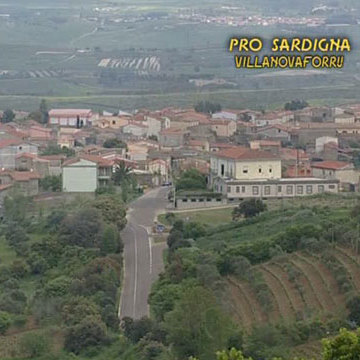The archaeological complex is located in the plain called Santa Maria and covers a vast area of the homonymous plain. It must have had its centerpiece in a rustic villa, dedicated to the cultivation of the fertile plain, with which a small thermal building was connected.
The first phase of the thermal building dates back to Roman times, probably in the first century AD. It is a small room (8.5 x 6.2 m), oriented S/O-N/E, consisting of a quadrangular entrance opening from which you can access the “calidarium”, that is, the heated environment; this is equipped with two “praefurnia”, that is, the rooms that housed the fire to heat the main room. The smaller “praefurnium” is located on the N/E side of the “calidarium” and ends with an apse, while the larger one, with a quadrangular plan, is arranged along the S/E side. The wall structure, of which few sections remain, is made of rows of bricks that regularly alternate with rows of local granite blocks bound by lime mortar (building technique of the “opus vittatum mixtum”).
The next phase is attributable to Christian times, when the 'calidarium' hosted the cult of the Virgin. In the Archaeological Museum of Villasimius, in the Sala del Territorio, there is a beautiful and well-kept mural statue, in an excellent state of preservation, from the Santa Maria complex. It is believed that this sculpture was used as a simulacrum of the Virgin when the thermal complex was transformed into a Christian worship hall.
The movable finds found in the area of the baths relate to a period between the imperial age and the early Middle Ages, when the building lost its original cultural function and housed, on the floor of the western sector, two burials for burial.
On the archaeological site there is a small country church dedicated to Santa Maria.
History of excavations
The thermal building was the subject of two excavation campaigns between 1980 and 1982.
Bibliography
A. Fanni-S. Maria, 'The Digging', in Villasimius. First archaeological evidence in the territory, Cagliari, 1982, pp. 83-84; C. Tronchetti-S. Mary.” Situation and problems”, in Villasimius. First archaeological evidence in the territory, Cagliari 1982, pp. 80-82; C. Cossu-G. Nieddu, Baths and Extraurban Villas of Roman Sardinia, Oristano, S'Alvure, 1992, p. 64;
P.G. Spanu, Byzantine Sardinia between the 6th and 7th centuries, series “Late Antique and Medieval Mediterranean. Excavations and research”, Oristano, S'Alvure, 1998, p. 134;
C. Perra, “The thermal building of Santa Maria”, in the Archaeological Museum of Villasimius, Cagliari, 2002, pp. 17-18.
How to get there
The archaeological complex is located before entering the town of Villasimius, on the right, adjacent to the modern church of Santa Maria, clearly visible from the road just a few meters away.
Content type:
Archaeological monument
Archaeology
Usability: unmanaged site
Province: Sud Sardegna
Common: Villasimius
Macro Territorial Area: South Sardinia
POSTAL CODE: 09049
Address: SP17 - località Santa Maria, Villaggio Mandorli
Update
Where is it
Images

Author : ambito romano

Author : ambito romano/ ambito altomedievale
Results 2 of 108990
View AllVideo

Author : Floris Laura

Results 2 of 42914
View All
Comments